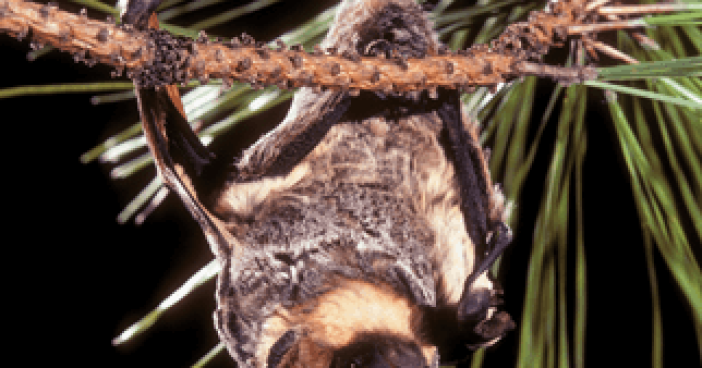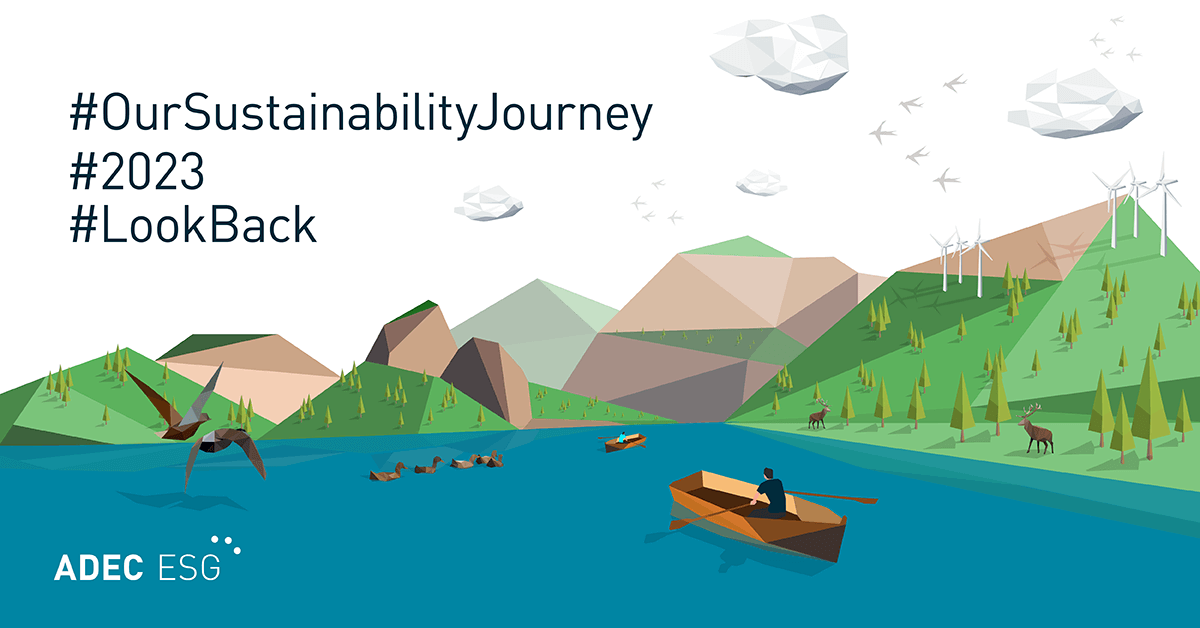Did you know? Bats are as equally susceptible to impacts related to renewable energy development as birds and other wildlife species? In fact, the California Energy Commission has published the “California Guidelines for Reducing Impacts Birds and Bats from Wind Energy Development” to help reduce potential project impacts to birds and bats. Recently, awareness has grown for potential impacts to bats from renewable energy development, and as more research is conducted, we will be able to figure out how to limit any potential impacts to bats.
What bats are at the highest risk from?
Most people may not know that bats can fly at similar heights as birds. Although you won’t find bats flying thousands of feet in the air, they can fly as high as most wind turbines, particularly bats that roost in trees. Bats will inhabit any area that have plenty of food and cover for day and/or night roosts, and many sites suited for renewable energy development have these factors. For tree-roosting bats, this includes areas with dense foliage, often near water, and with an ample supply of insects. The three most common bats affected by wind energy development are:
-the hoary bat (Lasiurus cinereus)
-silver-haired bat (Lasionycteris noctivagans)
-and eastern red bat (Lasiurus borealis)
These three bat varieties are all tree-roosting species. All three species occur throughout the United States, however the eastern red bat generally does not occur west of Texas.
What is causing wind turbine deaths for bats?
Research has shown that the majority of bat deaths occur during the autumn migration period, when many first-year bats are taking flight for the first time and older bats are migrating through an unfamiliar area. Unlike birds that fly into wind turbine blades or the turbine itself, the primary cause of death for bats appears to be barotrauma, which results when a flying bat enters the vortex created by spinning turbine blades. Spinning turbine blades create negative pressure pockets, and when the bats fly through it their lungs essentially explode when their air sacs over-expand and the surrounding capillaries burst. Most autopsied bats showed evidence of internal hemorrhaging and minor external injuries.
Whereas birds are known to strike a turbine and/or blade when flying or hunting for prey in close proximity to a turbine, bats are caught in the turbine blade vortex because they can’t see or hear the vortex while foraging or flying from their night roost. The bats’ sophisticated echolocation allows them to navigate better by sound than with their eyes, so many researchers were initially puzzled as to what was causing bat deaths when they should be able to avoid such large structures.
What can we do to reduce wind turbine deaths to bats?
As renewable energy development, particularly wind energy, continues to increase throughout the United States landscape, environmental regulatory compliance regarding protecting bats is becoming a higher priority. Initial concerns were focused on protecting bird species such as the golden eagle and mitigation measures to reduce bird deaths have so far been successful. However, bat mortalities are starting to equal the number of bird mortalities and additional protection measures are needed.
Currently, biologists throughout the country and Canada are conducting long-term monitoring studies at various wind farms to determine the prime conditions for potential bat mortalities. Field experiments are being conducted to alter when turbine rotors begin spinning in low winds – either by changing the wind speed trigger at which the rotors begin turning or by altering blade angles to reduce rotor speed, which results in near motionless turbines at low wind speeds. Other hypotheses for reducing wind turbine impacts to bats include emitting an electromagnetic field around wind turbines to reduce bat activity, broadcasting high frequency bat calls to deter bats from entering the area around turbines, and shutting down turbines at dawn and dusk when bats are most active.
While these hypothesized protection measures sound like good ideas, no long-term study results have been published to-date stating the success of any of these measures. As is the case with bat mortality public awareness, potential measures to reduce bat mortalities are still fairly new. The best way to reduce a potential impact of any project, particularly wind energy development, is proper up-front analysis and correct project design.
To help design an adequate pre-project survey and implement bat protection measures, contact a FCS Biologist to assist you BEFORE you build your project.
Did you enjoy this post? The author of this article is Tommy Molioo. Learn more about him here.





